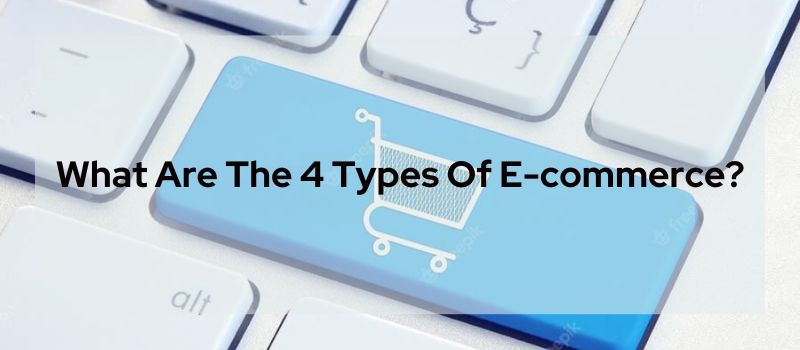Got an ecommerce biz but feel stuck on growth? I feel you. We had crazy success helping stores blow up their ecommerce Sales in 7 Steps with SEO. I’m talking over 11,400%! Wild right?
It’s not magic though – just some smart optimizations for search bots, site structure, content, and tech tools. When you get that stuff dialed, it’s like unlocking a secret growth lever. Revenue just starts pouring in!
So if you want the inside scoop on the ecommerce Sales in 7 Steps with SEO that made it happen, I got you. I’ll break it down in simple terms – no confusing technical jargon. Just practical stuff that works to pump up your online sales. Sound helpful?
Contents
- 1 How We Grew 11,400+ Ecommerce Sales in 7 Steps with SEO
- 2 Step 1: Fix Common Technical SEO Issues
- 3 Step 2: Build a Methodical SEO Audit Process
- 4 Step 3: Map Out Quality User Journeys
- 5 Step 4: Align Teams to Growth Goals
- 6 Step 5: Build Your Brand and Audience
- 7 Step 6: Craft a Strategic SEO Roadmap
- 8 Step 7: Leverage Technology for Growth
- 9 The Power of Consistency
- 10 FAQ’s
- 11 Conclusion:
How We Grew 11,400+ Ecommerce Sales in 7 Steps with SEO
By optimizing technical SEO, site architecture, content, and leveraging automation, we were able to help ecommerce businesses grow their sales by over 11,400% using a proven 7-step SEO framework. The key was focusing on high-impact strategies that compounded results over time.
Step 1: Fix Common Technical SEO Issues
Before diving into strategic SEO, it’s crucial to get the technical foundations right first. Here are some of the most common issues I see on ecommerce sites:
- Duplicate Product Pages: These not only confuse search engines, but also dilute the link equity and authority passed to your real product URLs. Identify and fix duplicate product collections.
- Low Quality Vendor Pages: If you’re running a dropshipping store, low quality or duplicate vendor pages can negatively impact your whole site’s rankings. Prune them from search indexes.
- Site Crawlability Issues: Make sure search bots can easily access all pages on your site by fixing things like crawling errors in Search Console.
- Duplicate Content: Eliminate duplicate page content across your site which confuses search engines.
- Thin Tag Pages: Don’t allow individual product tag or category pages to be indexed. Focus on your core product URLs.
- Site Speed Issues: Optimizing your site speed with caching, compression, etc dramatically improves SEO and conversions.
Tackling these basic technical issues first will lay the groundwork for growth.

Step 2: Build a Methodical SEO Audit Process
Conducting regular SEO audits is crucial for identifying issues proactively. Here are some key areas to audit consistently:
- Analytics Data: Audit Google Analytics and Search Console data together for insights on top landing pages, conversions, rankings, queries, etc.
- Page Speed: Routinely audit page speed on your most valuable landing pages. Fast sites rank better.
- Technical SEO: Periodically audit foundational technical SEO elements like site crawlability.
- Site Architecture: Review site architecture and internal linking to ensure it matches user intent.
- Product Pages: Audit product pages for keyword targeting, content, media, etc.
- Homepage: Analyze homepage layout, messaging, conversions.
- Low Traffic Pages: Evaluate lower traffic pages for optimization opportunities.
- Internal Linking: Check internal links are mapped to priority pages and user journeys.
- Topics Clusters: Build out strategic topic clusters around high value keywords.
- Link Equity: Audit where you currently have the most powerful backlinks.
- Schema Markup: Review schema markup implementation for rich snippets.
Consistency is key here. The more actionable insights you can dig up from audits, the more revenue growth opportunities you’ll find.
Step 3: Map Out Quality User Journeys
One of the biggest SEO wins is aligning your site architecture with how users naturally shop online. Here’s how to map out high-quality user journeys:
- Conduct User Research: Use surveys, interviews, and analytics to understand your users’ intents and pain points.
- Map Journeys to Keywords: Identify the macro and micro user journeys for your most valuable keywords and topics.
- Simplify Navigation: Design navigation and site architecture focused on simplifying key user journeys.
- Test and Iterate: Set up landing page and conversion funnel tests to refine journeys.
- Stay Agile: Continuously optimize site architecture as you gather more user insights.
The easier you make it for users to find products they want, the more your organic traffic and sales will grow.
Step 4: Align Teams to Growth Goals
Driving consistent SEO gains requires buy-in across your organization. Here are some tips:
- Communicate Goals: Ensure all departments understand core SEO and growth goals.
- Encourage Collaboration: Use tools like Slack or weekly calls to foster cross-team collaboration.
- Incentivize SEO: Incentivize teams and employees to contribute towards growth goals.
- Leverage Experts: Let your in-house or outsourced SEO experts focus on technical optimization.
- Cross-Team Feedback: Solicit feedback from all teams on site changes and new features.
Getting alignment across teams will allow you to scale SEO much faster.

Step 5: Build Your Brand and Audience
SEO becomes much easier when you have an established brand and engaged audience. Here are proven tactics:
- Personalized Content: Develop tailored content that resonates with each buyer persona.
- Community Building: Use social media, email, and content to foster brand advocates.
- PR Outreach: Earn high authority backlinks through relevant press mentions.
- Reviews: Proactively generate and promote authentic customer reviews.
- Retargeting: Remarket to site visitors across channels to increase conversions.
An audience that identifies with your brand is the ultimate competitive advantage for sustainable SEO success.
Step 6: Craft a Strategic SEO Roadmap
With the foundations in place, here is how to craft a results-driven SEO strategy:
- Prioritize High-Impact Areas: Fix the vital 20% of issues that drive 80% of rankings and revenue.
- Improve Site-wide Elements: Optimize headers, footers, sidebars, etc.
- Develop Topic Clusters: Build out clusters of interlinked pages around high-value topics.
- Map Intent Funnels: Design conversion funnels tailored to each user intent.
- Run Multivariate Tests: Test changes before site-wide rollout to validate impact.
- Compound Improvements: Continuously build on top of small SEO wins.
- Refine User Journeys: Use CRO to further simplify and refine on-site user journeys.
Consistently refining your strategy will compound gains over time.
Step 7: Leverage Technology for Growth
Finally, make sure to fully leverage the array of SEO technologies and tools available:
- SEO Software: Use SEO tools like Ahrefs, Moz, or SEMrush to scale your capabilities.
- Marketing Automation: Automate repetitive marketing tasks for efficiency.
- Remote Teams: Outsource to access specialized SEO skills cost-efficiently.
- AI Content Tools: Use AI writing tools to draft content faster.
- Predictive Analytics: Leverage data and machine learning to extract hidden SEO insights.
The right technology stack will help you punch above your weight with SEO.
The Power of Consistency
There you have it – a proven framework to structure your ecommerce SEO efforts in 2023.
While some elements of SEO will change over time, the fundamentals of great content, user experience, and technical optimization will drive sustainable growth for years to come.
The key is consistency. Resist the urge to jump between tactics. Stick to the fundamentals and keep refining your strategy.
FAQ’s
Q1: What’s the big deal with ecommerce SEO anyway?
Main things to focus on – fast site speed. Easy site navigation. Helpful content. Quality backlinks. Nailing the technical stuff. Do those well? You’ll rock at SEO.
Q2: How often should I check my site’s SEO?
Give your site’s SEO a checkup every month or two. That’ll help you catch problems early. And find new ways to improve.
Q3: How do I get my team excited about SEO?
Talk openly about goals. Offer bonuses for hitting targets. Ask for feedback. Use Slack to collaborate. Get everyone feeling invested in SEO.
Q4: What’s the best way to build my brand through SEO?
Create great content. Send email campaigns. Be social on media. Get reviews. That’ll help you become an authority. And build brand advocates.
Q5: What tech can boost my SEO?
Marketing automation. Predictive analytics tools. SEO software. Hiring remote experts. All great options to step up your SEO game.
Q6: How long until I see SEO results?
It takes 3-6 months of steady work. Small gains will compound into big results. Stick with it long term. You got this!
Conclusion:
The key takeaways are: focus on technical SEO fundamentals first, conduct recurring audits to find growth opportunities, optimize site architecture for user journeys, get organizational alignment on SEO goals, build your brand and audience for the long-term, execute a strategic prioritized roadmap, and leverage technology to boost capabilities.
I hope these proven Ecommerce Sales in 7 Steps with SEO strategies give you clarity and confidence in scaling your SEO efforts. If you need any help executing this plan or want to discuss how I can customize an SEO roadmap for your business, feel free to schedule a best SEO strategy call with me.
Read More:



